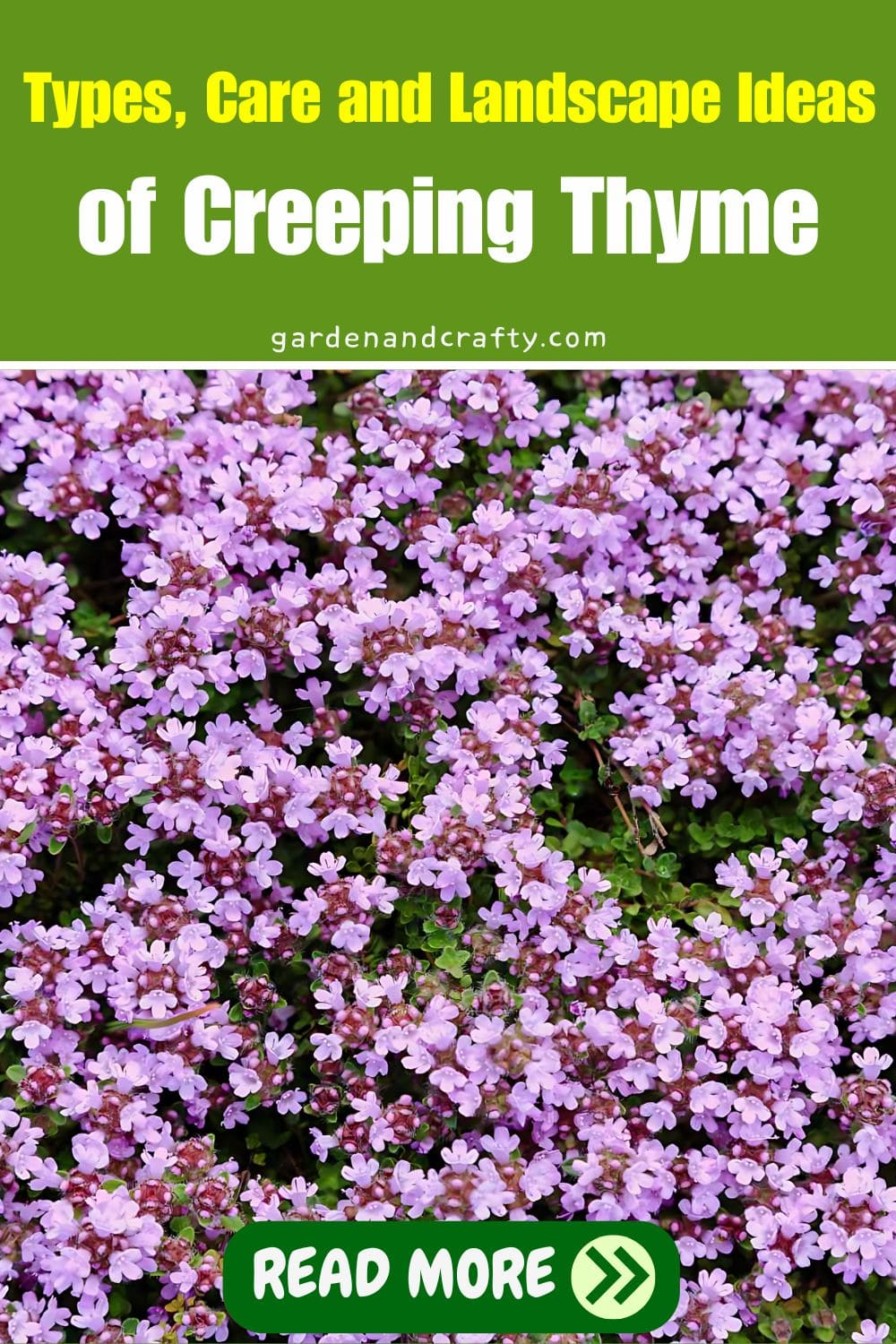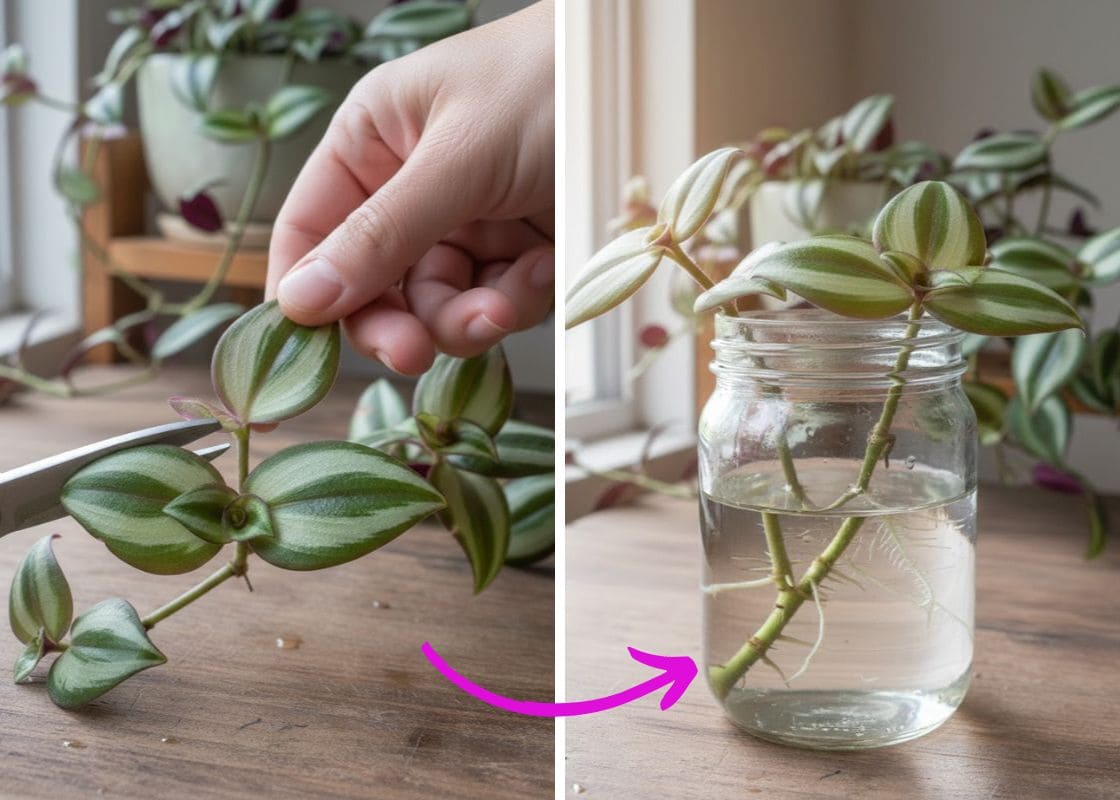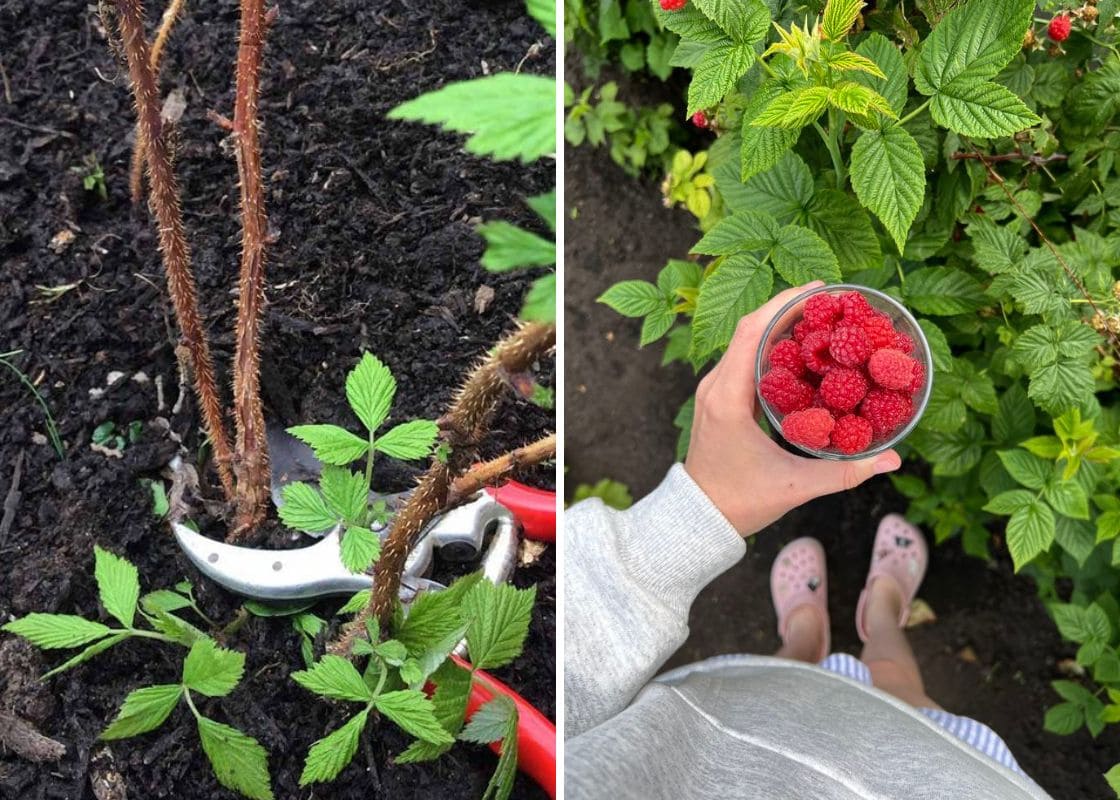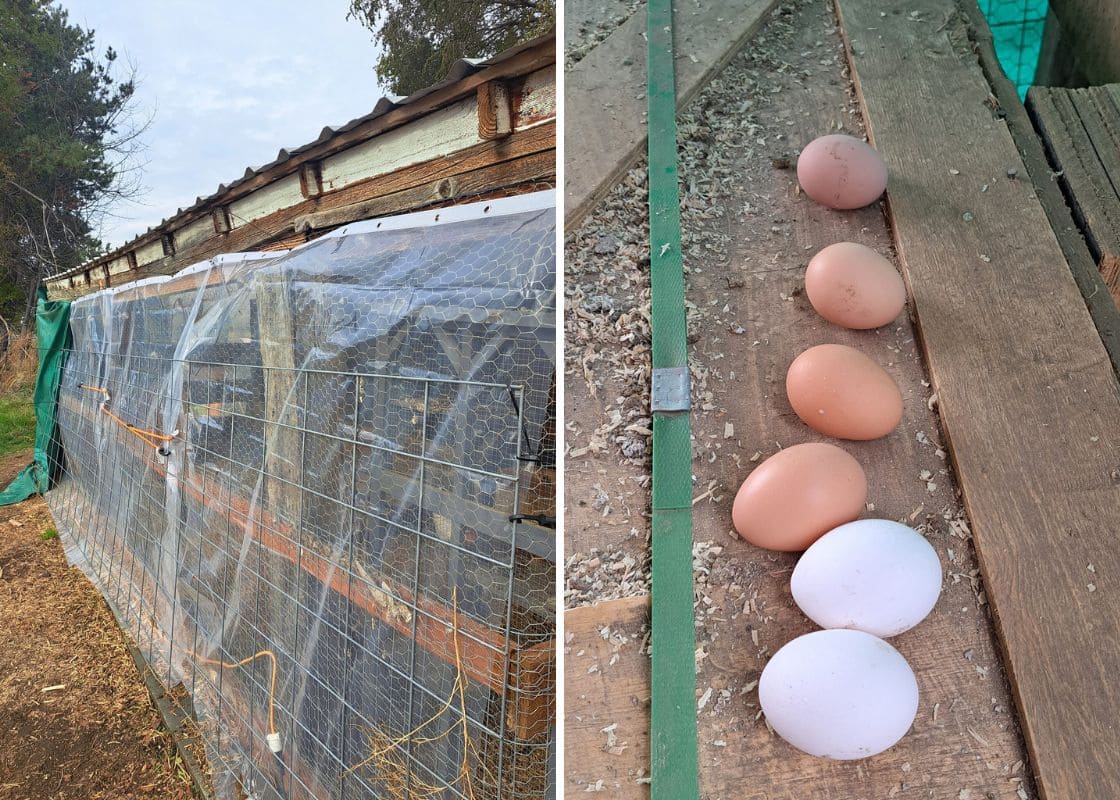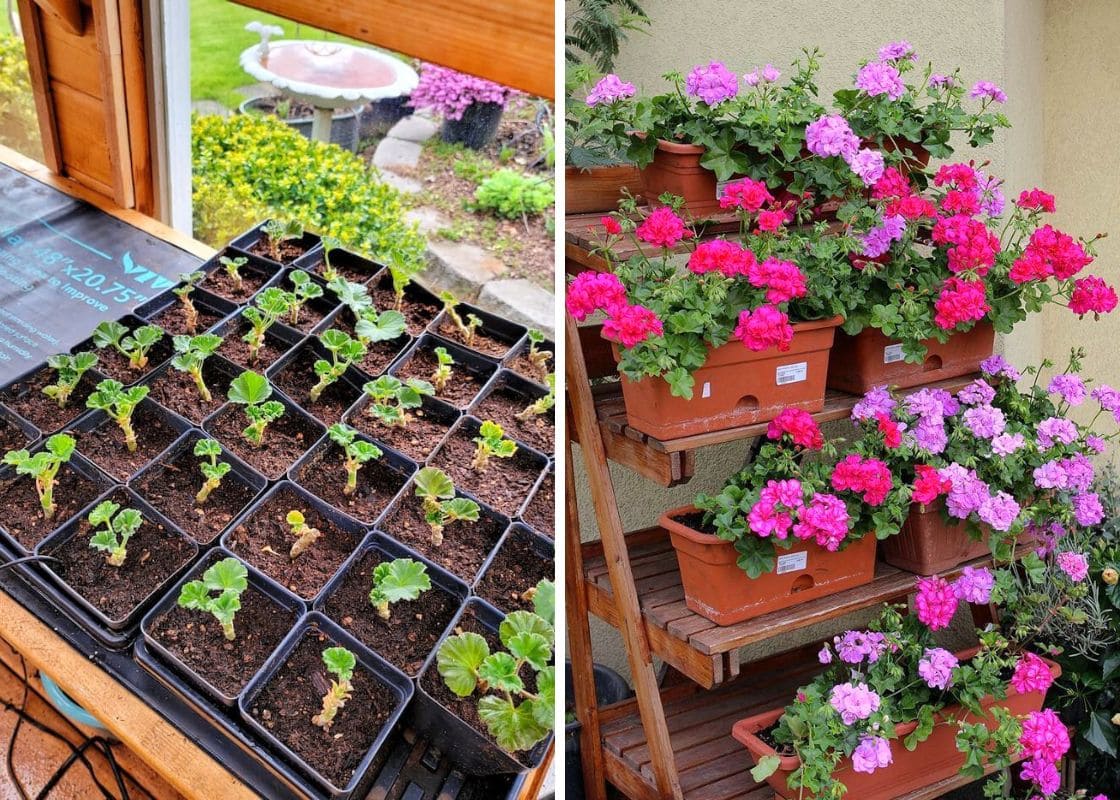Creeping thyme is a charming, low-growing herb that infuses your garden with a pleasant aroma while providing lush ground cover. It’s a favorite among gardeners due to its hardiness and ease of care.
Whether you want to fill gaps between stepping stones, enhance a rock garden, or create vibrant borders, creeping thyme offers a visually appealing and versatile solution.
This resilient herb thrives in diverse conditions, from drought-prone areas to poor soils, and attracts beneficial pollinators like bees and butterflies.
In this guide, we’ll explore the types and colors of creeping thyme, offer essential care tips, and inspire you with creative landscape ideas. Let’s dive in and see how creeping thyme can transform your garden.
Key Takeaways
- Creeping thyme is a hardy, aromatic herb coming in vibrant colors such as purple, pink, red, and white, adding visual interest to any garden.
- It is drought-tolerant, pest-resistant, and minimal care.
- It is perfect for enhancing rock gardens, pathways, container gardens, and more.
| Scientific name | Thymus serpyllum |
| Common name | Creeping thyme, wild thyme, mother of thyme |
| Plant Type | Perennial herb |
| Mature size | 2-3 ft. tall, up to 12 ft. wide |
| Flower color | Pink, purple, red |
| Foliage | Evergreen, aromatic |
| Bloom time | Late spring to early summer |
| Habitat | Dry, rocky soils, full sun |
| Hardiness Zones | 4-9 |
| Native area | Europe |
Types and Colors of Creeping Thyme
Creeping thyme comes in a variety of colors, adding striking contrasts to garden beds. Here are main types:
- Purple Carpet
Purple Carpet thyme is known for its dense mat of tiny, aromatic leaves and vibrant purple flowers.
This fragrant ground cover thrives in full sun and well-drained soils, making it ideal for rock gardens, pathways, and borders.
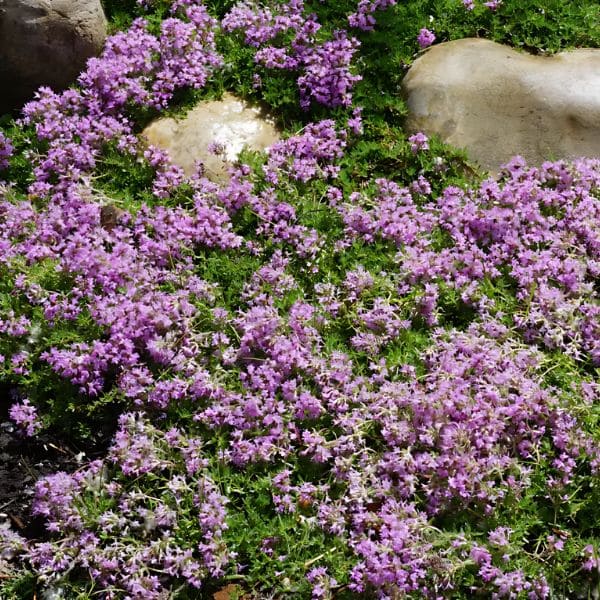
- Mother of Thyme
Mother of Thyme, or Thymus praecox, has soft, aromatic foliage and delicate pink flowers.
This variety thrives in full sun and well-drained, rocky soils, perfect for ground cover, borders, and rock gardens.
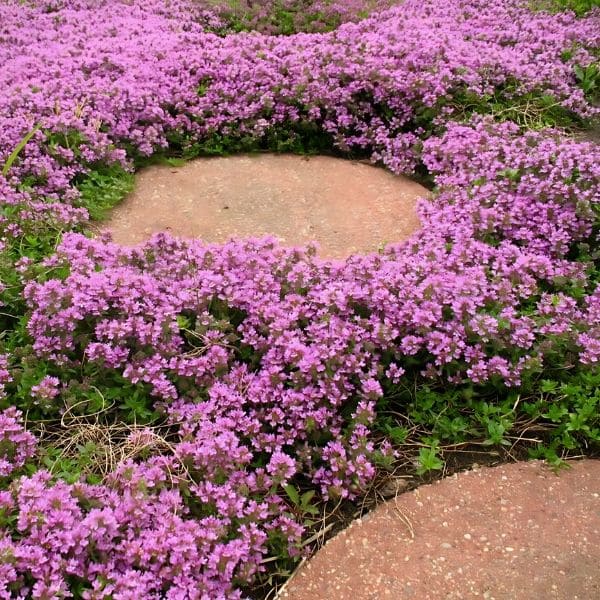
- Red Creeping Thyme
Red Creeping Thyme is known for its striking red flowers and aromatic, dark green foliage.
It thrives in full sun and well-drained soils, making it an excellent choice for ground cover, borders, and rock gardens.

- White Creeping Thyme
White Creeping Thyme features tiny, aromatic leaves and clusters of charming white flowers.
This plant thrives in full sun and well-drained soils, making it ideal for ground cover, borders, and rock gardens.

- Elfin Creeping Thyme
Elfin Creeping Thyme is a petite variety known for its dense, aromatic foliage and tiny, pale pink flowers.
It thrives in full sun and well-drained soils, making it perfect for small spaces, rock gardens, and between stepping stones.

- Golden Creeping Thyme
Golden Creeping Thyme features striking golden-yellow foliage and tiny pink flowers.
This plant thrives in full sun and well-drained soils, making it perfect for adding color contrast to borders, rock gardens, and ground cover.
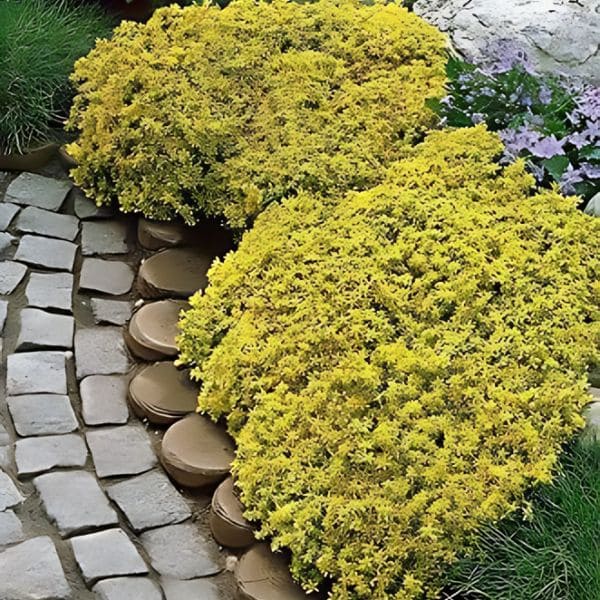
Care for Creeping Thyme
Growing Creeping Thyme
Planting creeping thyme from seeds is simple. Select a sunny spot with well-drained soil. The best time to sow seeds is in the spring.
Lightly rake the soil to create a fine seedbed. Scatter the seeds evenly over the surface and gently press them into the soil without covering them, as they need light to germinate. Water the area gently to keep the soil moist but not waterlogged.
Seeds typically germinate within 14-28 days. Once seedlings are established, thin them out to about 12 inches apart to allow for proper growth and air circulation.
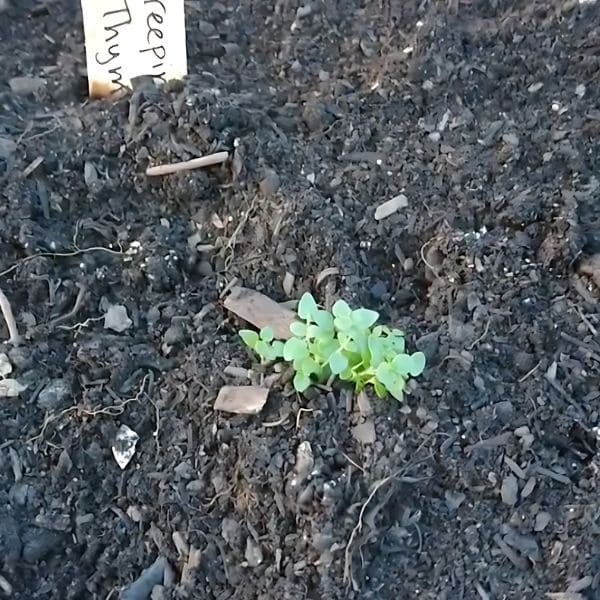
Care for Creeping Thyme
Here are top notes when caring for creeping thyme:
- Ensure full sun exposure for at least 6-8 hours daily.
- Use well-drained, sandy, or rocky soil with a pH between 6.0 and 8.0.
- Water sparingly; let the soil dry out between waterings to prevent root rot.
- Trim after flowering to maintain shape and encourage new growth.
- In colder climates, mulch around the base.
Light
Creeping thyme thrives best in full sun, requiring at least 6-8 hours of direct sunlight daily. Full sun promotes lush growth and vibrant blooms, enhancing the plant’s aromatic qualities.
While it can tolerate partial shade, too little light may result in reduced flowering and a less vigorous, leggy appearance.
Soil
Creeping thyme prefers well-drained, sandy, or rocky soil with a pH between 6.0 and 8.0. This type of soil prevents waterlogging, reducing the risk of root rot.
Well-drained soil also ensures that the roots receive enough oxygen, promoting healthy growth and vibrant, aromatic foliage.
Water
Creeping thyme requires minimal watering, needing only moderate moisture. Water the plant thoroughly but allow the soil to dry out between waterings to prevent root rot.
Typically, watering once a week is sufficient, but adjust based on weather conditions. Overwatering can harm this drought-tolerant herb.
Temperature and Humidity
Creeping thyme thrives in temperatures ranging from 65-75°F and is hardy in USDA zones 4-9. It tolerates various humidity levels but prefers dry to moderate conditions.
Extreme heat or high humidity can stress the plant, while cooler temperatures promote robust growth and enhance its aromatic qualities.
Pruning
Pruning creeping thyme encourages dense growth and prevents it from becoming woody.
Use sharp scissors or pruning shears to trim the plant after flowering, cutting back about one-third of the growth. This technique promotes new shoots, maintains shape, and enhances the plant’s overall health and appearance.
Fertilizer
Creeping thyme generally doesn’t need fertilizer if planted in well-prepared soil.
For poor soils, apply a slow-release fertilizer at the start of the growing season, following the label’s instructions. This ensures the plant receives essential nutrients, promoting healthy growth and vibrant flowers without over-fertilizing.
Winter Care
In winter, mulch around the base to protect roots from freezing. Reduce watering as the plant enters dormancy, ensuring the soil remains dry to prevent root rot. In harsh climates, consider covering with a frost cloth for extra protection.
Pests and Diseases
Creeping thyme can be affected by pests such as spider mites and aphids, which cause leaf discoloration and damage. It may also suffer from root rot due to overwatering and powdery mildew from high humidity.
To manage these issues, ensure proper watering, maintain good air circulation, and treat with insecticidal soap or neem oil as needed.
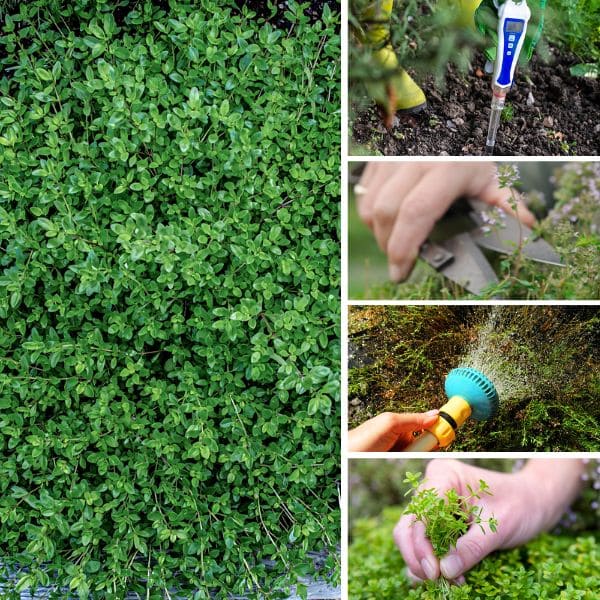
Landscape Ideas with Creeping Thyme
Ground Cover
Creeping thyme’s dense, mat-forming growth makes it an ideal ground cover for suppressing weeds. Its vibrant colors, ranging from purples and pinks to whites and reds, add visual interest.
For best results, plant densely and trim regularly to maintain its lush appearance and encourage healthy, robust growth.
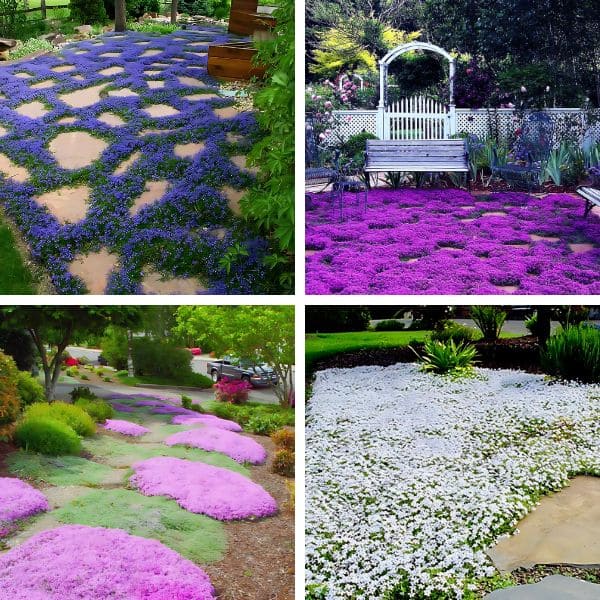
Pathway Accents
Creeping thyme is perfect for pathway accents, softening hardscape edges with its vibrant colors and fragrant underfoot presence.
Plant thyme between stepping stones and combine it with other low-growing plants for a lush, cohesive look. This creates a charming, aromatic pathway that enhances your garden’s appeal.

Rock Gardens
Creeping thyme is ideal for rock gardens, adding vibrant colors that complement rocks and succulents. Its drought-tolerant nature makes it perfect for these conditions.
Plant thyme in crevices and let it cascade over stones to create a natural, flowing look that enhances the garden’s texture and appeal.
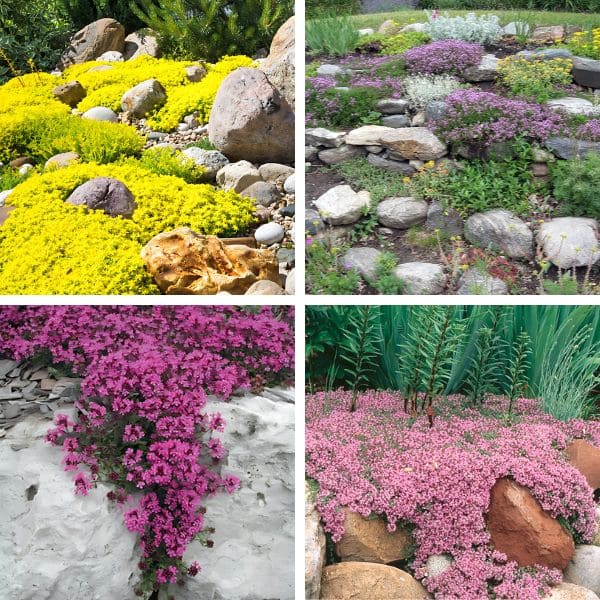
Container Gardens
Creeping thyme is versatile for container gardens, adding vibrant colors to pots and hanging baskets. Its aromatic foliage and bright blooms make any container pop.
Ensure good drainage and water moderately to keep the thyme healthy. This adaptable plant brings beauty and fragrance to patios, balconies, and small spaces.
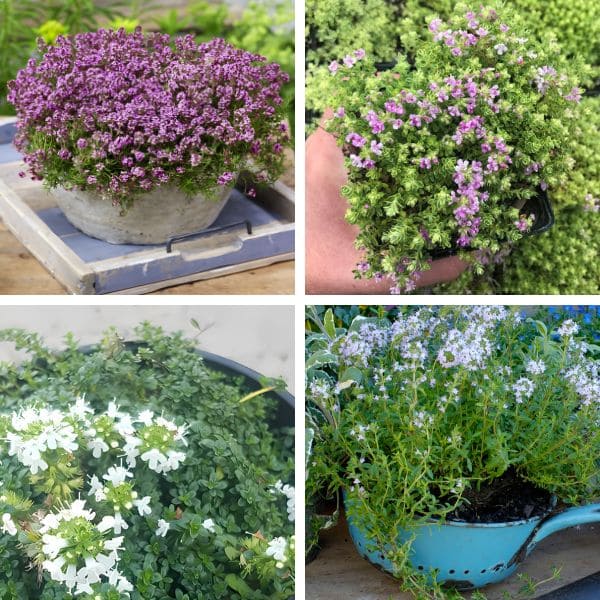
Borders and Edges
Creeping thyme is perfect for borders and edges, defining garden beds while preventing soil erosion. Its vibrant colors and aromatic foliage create a striking contrast.
For a layered effect, mix creeping thyme with taller plants. This combination adds depth and visual interest, enhancing the overall aesthetic of your garden.
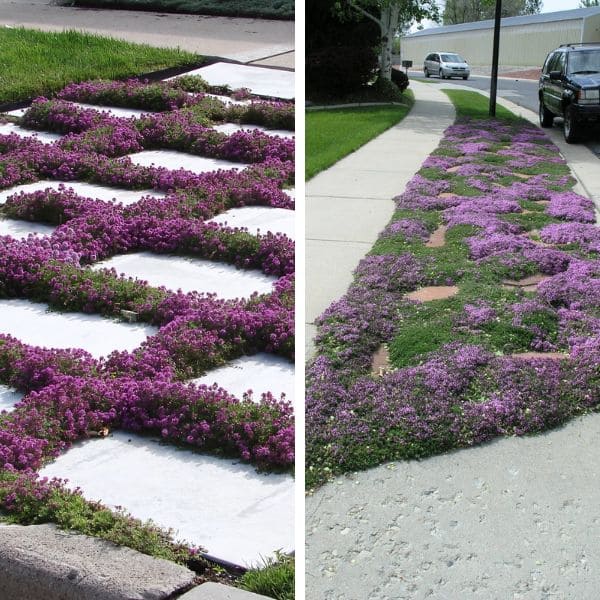
Vertical Gardens
Creeping thyme brings vibrant colors and fragrance to vertical gardens, offering an innovative use for walls and vertical planters. Use lightweight soil and ensure adequate sunlight for optimal growth.
This versatile plant cascades beautifully, adding texture and visual interest to vertical spaces while maximizing your garden’s potential.

Incorporating creeping thyme into your garden enhances its beauty and functionality, offering vibrant, low-maintenance options from ground covers to vertical gardens.
